
In Praise of Weird Literary Romances
On Valentine's Day, 8 Novels of Unlikely Love
Have you ever walked around on Valentine’s Day feeling like a mutant? The crinkly assault of Mylar heart-balloon clusters; the blood-red tunnel of Hallmark cards at Walgreens and CVS; the couples eating overpriced appetizers at bistro tables with their faces twisted into that Desperate Restaurant Stare—it can all make an observer feel like an alien from a faraway planet.
It can make a person think, if this is how humans are expected to express love for each other, perhaps I am in fact something different. I feel this way on Valentine’s Day whether I am single or coupled. Love is magical and worth celebrating—but to me the moments when it feels most real are the weird private ones, the wondrous ones that arrive seemingly out of nowhere, the ones that are, more often than not, a little bit scary.
Love is hairy, absurd, and dangerous. Of course it’s sometimes mundane and boring too, but only in the way that if you had a pet python named Carl you’d probably get used to him after a while, fail to even notice him sometimes, think of him mostly as an obligation—shoot, who will feed Carl when I go to that conference in Tampa?—and then once in a while you’d catch a glimpse of the terrarium in the corner and think holy shit I live with this thing that could kill me, Carl could totally kill me, and then you’d walk over and lift Carl out of his terrarium and marvel not only that Carl chooses every day not to kill you but that he exists in this world at all: millions of years of evolution culminating in the sleek muscled cable of his body, the dizzying beauty of his scales, the deep black knowing in his tiny beadlike eyes.
Literature can remind us of love’s inherent strangeness—and can illustrate this strangeness in vivid, surprising ways. Many of my favorite literary lovers make unusual pairs: human and mythical creature, human and monster, human and bodiless glowing energy. In other stories, love itself is the strange thing: the ordinary human-sized promise that turns into an mythic underworld journey, the scrappy plant that springs up between the cracks of a hostile, impersonal universe.
Read these books to remind yourself that love is weird. Read them to console yourself if you’re lonely, if you’re sadly remembering a love that now seems too otherworldly to have been real. Read them if you find yourself pressing your nose to the glass of other people’s relationships, wondering is it really like that?
Or read them to reawaken a healthy sense of danger if you’ve grown complacent in a lengthy love. Perhaps you’re wondering why you keep falling for monsters or vampires (literal or metaphorical)—or perhaps you are currently in the throes of the beautiful, terrifying transformation that love can bring, and you feel like a monster in your tender new skin. Whoever you are, however you love, enjoy.
*
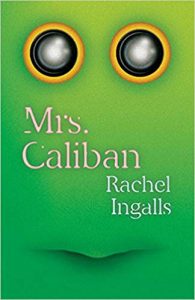
Mrs. Caliban by Rachel Ingalls (1982)
Dorothy is a suburban housewife numbed by routine, going through the motions of her marriage despite the grief-haunted absence at its center. She unexpectedly finds her passion rekindled in the unlikely person (?) of a green amphibious monster named Larry, escaped from the Institute for Oceanographic Research.
The pleasure of the novel comes not only from watching Dorothy slowly come back to life and reckon with how dead she’d become, but from her exchanges with Larry, who desperately wants to understand human culture but is baffled by Merce Cunningham and “radical chic.” This slim novel’s impact is sly, but huge. Beneath Ingalls’ restrained, deadpan prose, its melancholy creeps up on you, then envelops you—like the embrace of a sea-creature who only wants what we all want: to be seen and loved, to salve the colossal ache of his own unbelonging.
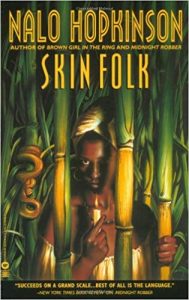
Skin Folk by Nalo Hopkinson (2001)
In an introduction to this wonderful collection, Hopkinson writes: “Throughout the Caribbean, under different names, you’ll find stories about people who aren’t what they seem. Skin gives these skin folk their human shape. When the skin comes off, their true selves emerge. They may be owls. They may be vampiric balls of fire. And always, whatever the burden their skins bear, once they remove them—once they get under their own skins—they can fly.”
Isn’t this a perfect metaphor for love, the horror and the wonder of it? It can peel us raw, lift our burdens, and make us fly. But what lies beneath that burdened skin? Plain old meat and bone, or something that might destroy us? In these stories, Hopkinson offers her own take on fairy tales and folklore, both Caribbean and European; there’s a wonderfully carnal variant of “Little Red Riding Hood” and a version of “Bluebeard” that’s all the more horrifying for the insights it offers into misogyny, colorism, and internalized anti-Blackness.
But Hopkinson doesn’t need to rely on magic tricks to illuminate human relationships: another one of my favorites, “Fisherman,” offers a prolonged, juicy account of a queer sexual awakening that takes place in a brothel. Whether you’re looking for a cautionary tale about marriage or the most joyful fisting scene you’re likely to read this year or any, Skin Folk will get under your skin.
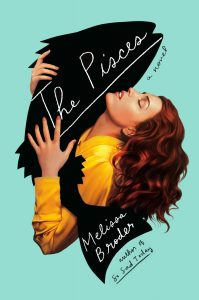
The Pisces by Melissa Broder (2018)
In this novel, Lucy—a Sappho scholar stalling on her dissertation, reeling from a breakup, and realizing that she’s not only depressed but also a love and sex addict—attends group therapy in Venice Beach while conducting a clandestine affair with a merman named Theo. The novel’s genius lies in the way it juxtaposes the stale, easily-mockable language of self-help (“I’m doing me”; “My inner child is triggered”) with the jagged, rock-hard reality of loneliness, the adrenaline rush of desire, the Siren call of self-annihilation.
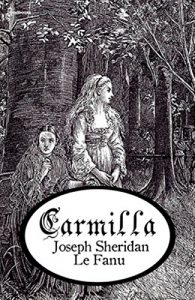
Carmilla by Joseph Sheridan Le Fanu (1872)
Have you ever been powerfully drawn to and repulsed by a person at the same time? Have you ever been frightened by your own attraction to someone—someone who isn’t the person you’re “supposed to be” attracted to? Have you ever suspected that your crush might actually be a dead-countess-turned-vampire who’s stealing into your room at night and slowly sucking your life-force while also finding time to murder other inhabitants of your isolated mountain estate?
If so, read Carmilla and find that you are not alone. This 1872 Gothic novella is widely read as a thinly-veiled lesbian romance, and with good reason: the heroine, Laura, describes the vampire’s nightly visitations as full of “strange sensations” that begin with kisses from “warm lips” and then end in a feeling of “strangulation” and “dreadful convulsion.” Yum!

No One Belongs Here More Than You by Miranda July (2008)
These sparklingly original stories chronicle love at its strangest and most nakedly vulnerable. There’s the woman in “Majesty” who yearns for Prince William after he “nuzzles her buns” in a dream; the unexpected love that blooms between two male workers at a purse factory under the guise of a setup with a nonexistent sister, in “The Sister”; the 40 women who gather for a seminar on how “to become more romantic” in “It Was Romance.”
But my favorite, perhaps, is “Making Love in 2003,” which tells of the narrator’s affair with a “glowing dark shape” that enters her room and takes her virginity at age 15, promising to later return embodied in the person of a man named Steve. This conceit becomes a vehicle to explore a fantasy of consensual ravishment, of transcending the body through bodily sensation: “If I was scared the first time, it was because I didn’t know I could survive such pleasure. I thought maybe I was trading my life for this… To fall for a million years like a flute falls, musically, played by the air it is passing through.”
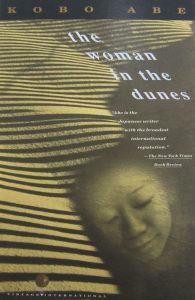
The Woman in the Dunes by Kōbō Abe (1962)
If you’re at a cynical place in your romantic life where you find yourself wondering “Is ‘love’ really just Stockholm Syndrome?”, then this is the book for you: a bizarre, suspenseful fable in which an amateur entomologist is captured and forced to cohabitate with a nameless woman in a deep, sandy hole. To call their connection “love” or even “romance” is perhaps a stretch, but the characters’ mutual confinement yields sex, violence, resentment, affection, and eventually a passive acceptance perhaps indistinguishable from peace.
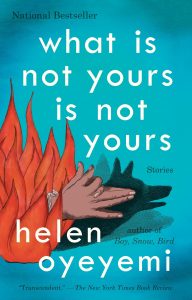
What is Not Yours is Not Yours by Helen Oyeyemi (2016)
This collection of loosely-linked stories, centered around the concept of locks and keys, contains several whimsical explorations of love at its most surprising. The first story, “Books and Roses,” has a secret garden and library at its center—spaces embodying the private mystery of clandestine love. In “Is Your Blood as Red as This?”, a bookish introvert befriends a haunted puppet in order to pursue her aspiring-puppeteer crush, and finds herself a student at an elite puppetry academy where the lines between human and nonhuman, boy and girl, living and dead, are all intriguingly blurred. Wonderfully queer in every sense of the word, these stories yield dark insights despite their lighthearted conceits: “it’s not always affinity that draws us together (not always, not only)… you can be called to undo the deeds of another.”
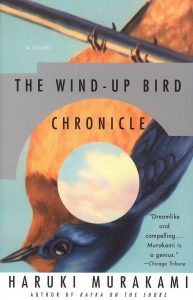
The Wind-Up Bird Chronicle by Haruki Murakami (1994)
This is my favorite book of all time, for many reasons—one of which is the way it depicts love, of even the most ordinary variety, as an underworld journey requiring the stoicism of a detective and the quiet bravery of a monk. When Toru Okada’s cat disappears, followed by his wife Kumiko, he embarks on a quest to find both of them and in the process to figure out where and how things began to go wrong in his marriage.
Along the way he meets many unique characters: psychics, traumatized veterans, a mother-son team named Nutmeg and Cinnamon, a sarcastic teenage girl who leads him to an abandoned well where he’ll battle the dark psychic force of his evil brother-in-law. If this sounds confusing, it is—in the best possible way. The book has the suspense of a detective novel, the dreamlike weirdness of a David Lynch movie, and the earnest beating heart of a simple husband who simply loves his wife (for Murakami, the “simple” is the strangest of all).
______________________________________
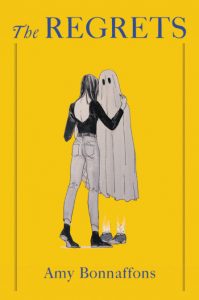
Amy Bonnaffons’ novel The Regrets is out now from Little, Brown.
Amy Bonnaffons
Amy Bonnaffons’s work has appeared in the New York Times, the Wall Street Journal, and the Kenyon Review, among other places, and has been read on This American Life. She is a founding editor of 7×7.la, an online journal that publishes collaborations between writers and visual artists. She holds an MFA from NYU and currently lives in Athens, GA, where she is pursuing a PhD at the University of Georgia.



















